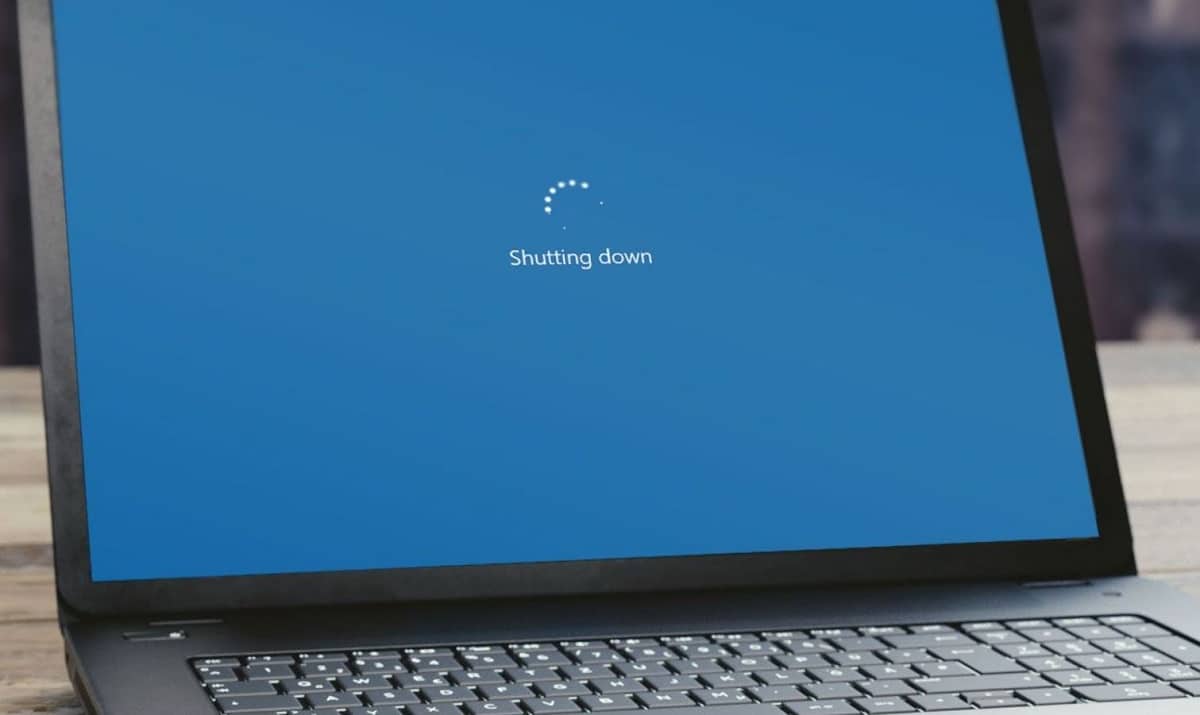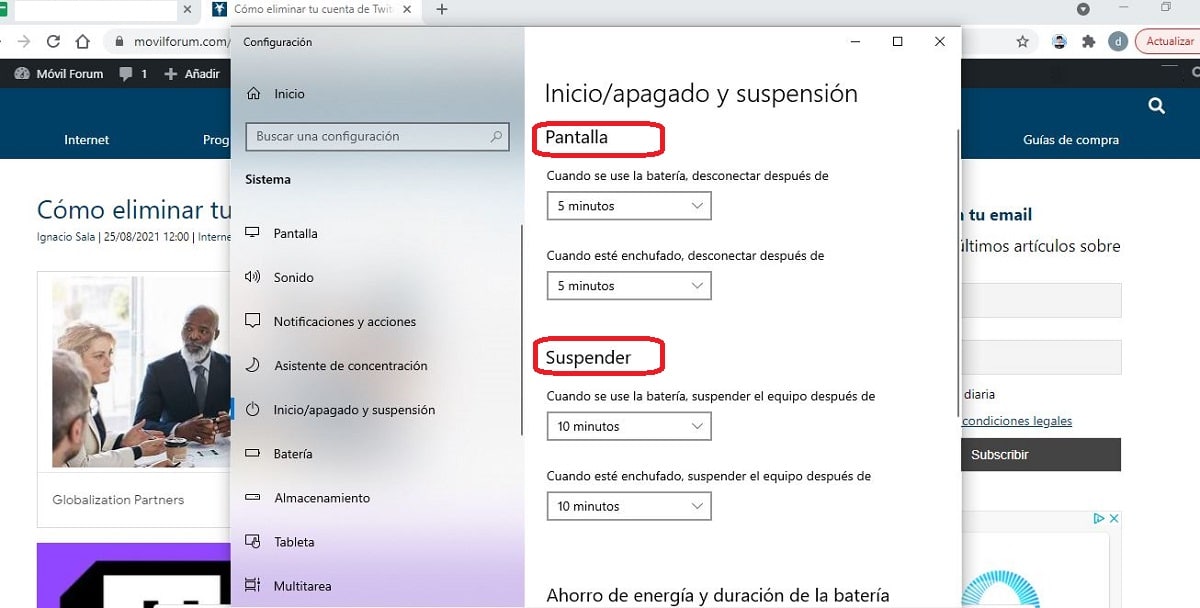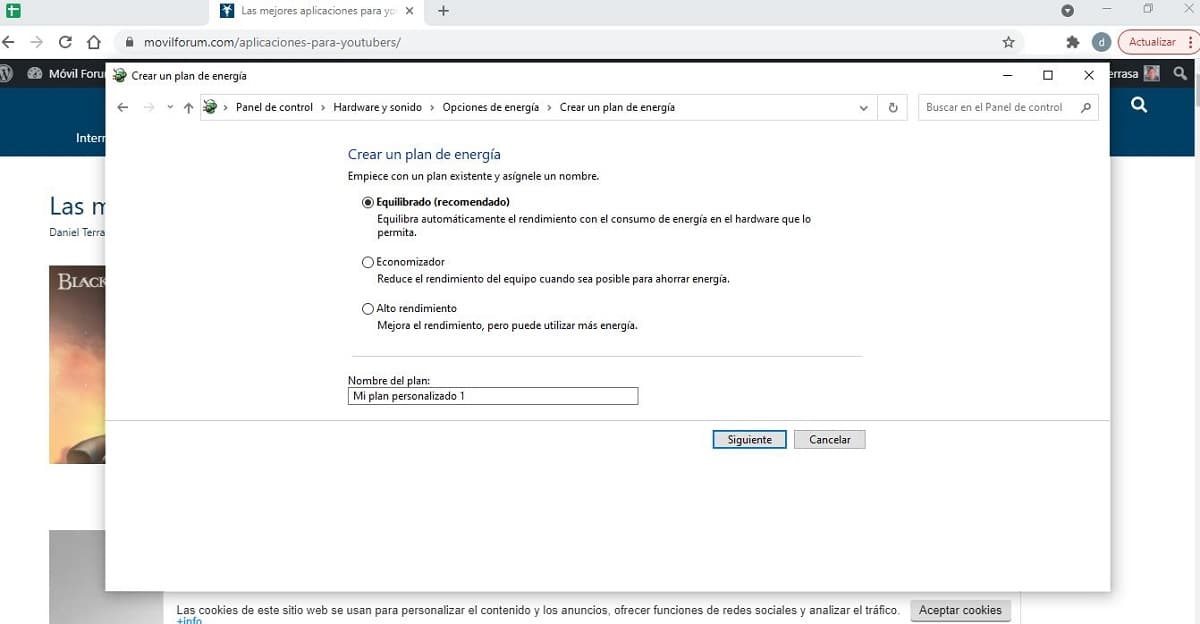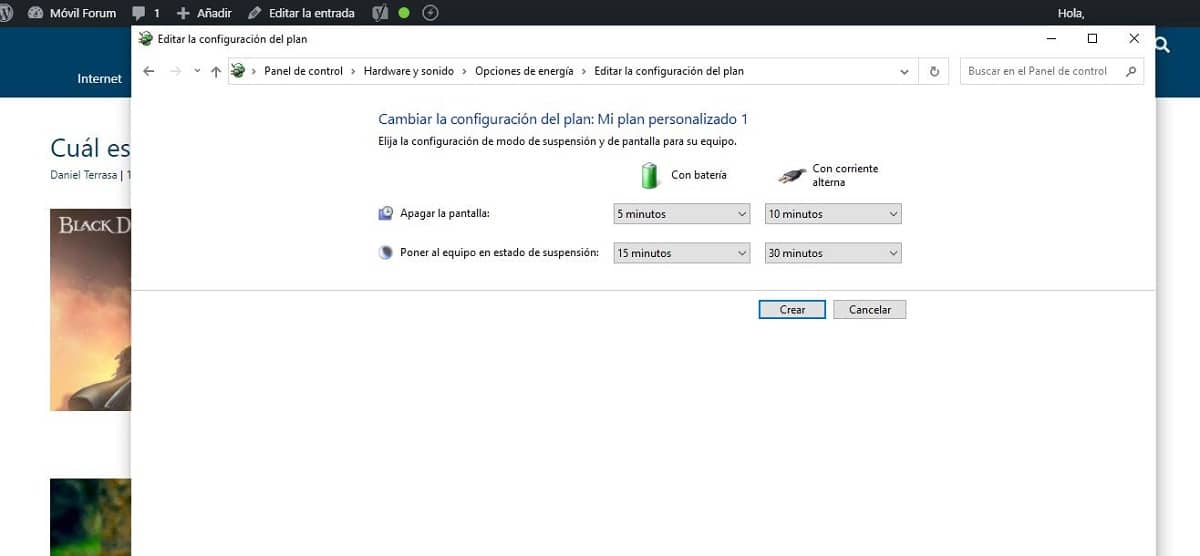
One of the usual responses of Windows for energy saving it is the suspension or shutdown after a certain period of inactivity. This is a good thing in principle, but in some circumstances it can be annoying and even inconvenient for the user. So today we are going to see how to do so that the computer does not suspend.
First of all, it must be made clear that these suspensions do not necessarily imply an error in the operation of our PC. It is clear that it is an unnecessary waste of energy leave the PC on when no one is using it. So, watching over the saving on our electricity bill, Windows turns off the screen first, and after a few minutes, it also suspends the session.
There is also another good reason for the operating system to act like this. Having the computer turned on unnecessarily for a long time can end up affecting its operation and, in the long term, generate problems most important on our PC.
However, we may not be interested in this automatic suspension of the computer for any particular reason. Or simply because we like to always have it at hand. Yes, of course: in principle Windows acts for the good of the team and looking after our interests, but we as users probably prefer to enjoy more freedom and choose our own options.
If this is our case, we will have to see what alternatives we have to cancel this suspension or, at least, manage it in our own way.
How to prevent your PC screen from turning off
Before addressing the question of how to make the computer not suspend, let's see the options that exist to prevent our screen from turning off in Windows 10.

How to prevent your PC screen from turning off
To achieve this it will be necessary to make some changes in the configuration of the system's power options. By default, Windows establishes a power configuration system that includes the automatic screen off. To save energy and avoid wear and tear.
But this system can be activated very easily. These are the steps to follow:
- First we will go to the button "Start". Right click on it.
- In the tools menu that opens next, we choose the option of "Energy options".
- Clicking on it opens a configuration window. The button that interests us there is the "Start / stop and suspend".
- Within this new menu we will find several options, among them these:
- Screen. In the drop-down list we can choose the option "never", so that it remains always on, or we will choose a certain time value after which the automatic shutdown will occur.
- Lay off. It works in the same way, although what is regulated through this option is to suspend the equipment. We can also choose "never" or for a specific period of time.
Choose our own Power Plan
However, if we want to manage something other than the screen and we also want to control when Windows will go to "sleep" after a period of inactivity, we must implement our own Power plan. No need to worry, as this is much simpler than its name suggests. We explain it to you below.

Windows allows us to create our own power plan to manage the suspension of computer activity after a period of inactivity,
There are several ways to access the power options menu of our Windows computer. The most direct is this:
- We right-click on the battery icon, which generally appears in the lower right corner of our screen.
- A small menu will open. In it we will choose "Energy options".
- In the next screen that opens, we will go to "Create a power plan". (*)
(*) The truth is that you can also choose between three preconfigured plans that Windows offers us: balanced, economical and high performance. However, the option to "create a power plan" gives us the ability to manage everything from scratch according to our own preferences and needs.
Computer never off
Once we have reached this point, it is time to design our own plan and thus answer the initial question of how to prevent the computer from being suspended. And the first step is as simple as give it a name. Once this is done, we will click on the "create" button to start the configuration process.
What will appear next is a series of options:
- Two of them referring to automatic screen off (whether the computer is connected to the current or not).
- Two others referring to PC shutdown or sleep (also with the two variants mentioned above: whether the equipment is connected to the current or not).

How to prevent the computer from sleeping in Windows 10
The next thing we must do is simply open the drop-down lists of each of the four options, in which a series of values will appear. At the end of the list we will find the "Never" option. This is the one that we will have to select if we want to prevent the screen from turning off after a certain time of inactivity.
It should be noted here that this period of inactivity It assumes that the PC is not performing any task and that we, as users, do not use the keyboard or mouse at any time.
This is a definitive way to resolve that question of how to do so that the computer does not suspend. However, it is important to know that by disabling the Windows 10 mechanism for automatic screen shutdown and computer suspension, we will cause the battery to drain in a shorter period of time. We will also contribute to faster screen wear. These are aspects to consider before making this decision.
How to prevent the hard drive from shutting down
There is yet another variant on this automatic PC shutdown equation. Normally, when the programmed and pre-configured power save mode is activated, it will also the duo disk of the computer goes "to sleep". But there is a way to avoid it. You have to follow these steps:
- To start with, we open the windows control panel.
- There, we select "Energy options".
- Then we click "Change plan settings."
- In the new window that opens we click on the option "Change advanced power settings" and in the pop-up box that appears we select the option of "HDD".
- To get the desired settings (that is, prevent the disk from shutting down), in the settings box we choose the value «Never». If it is a laptop, the same configuration will have to be established both for when it is used with battery as with connection to the current.
Finally, there is a link to a previous article in which we dealt with the opposite question: Why won't Windows 10 turn off and how to achieve it?